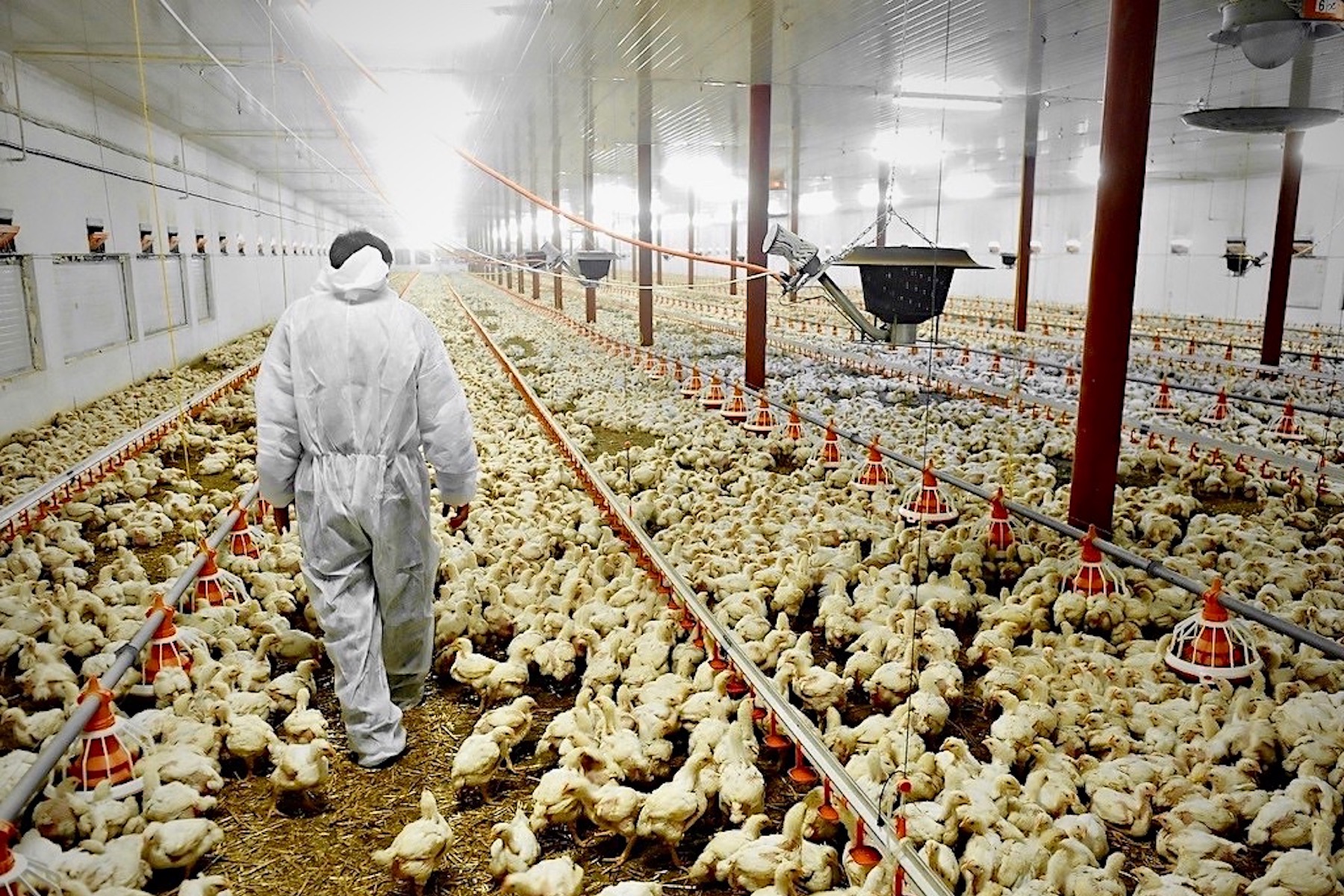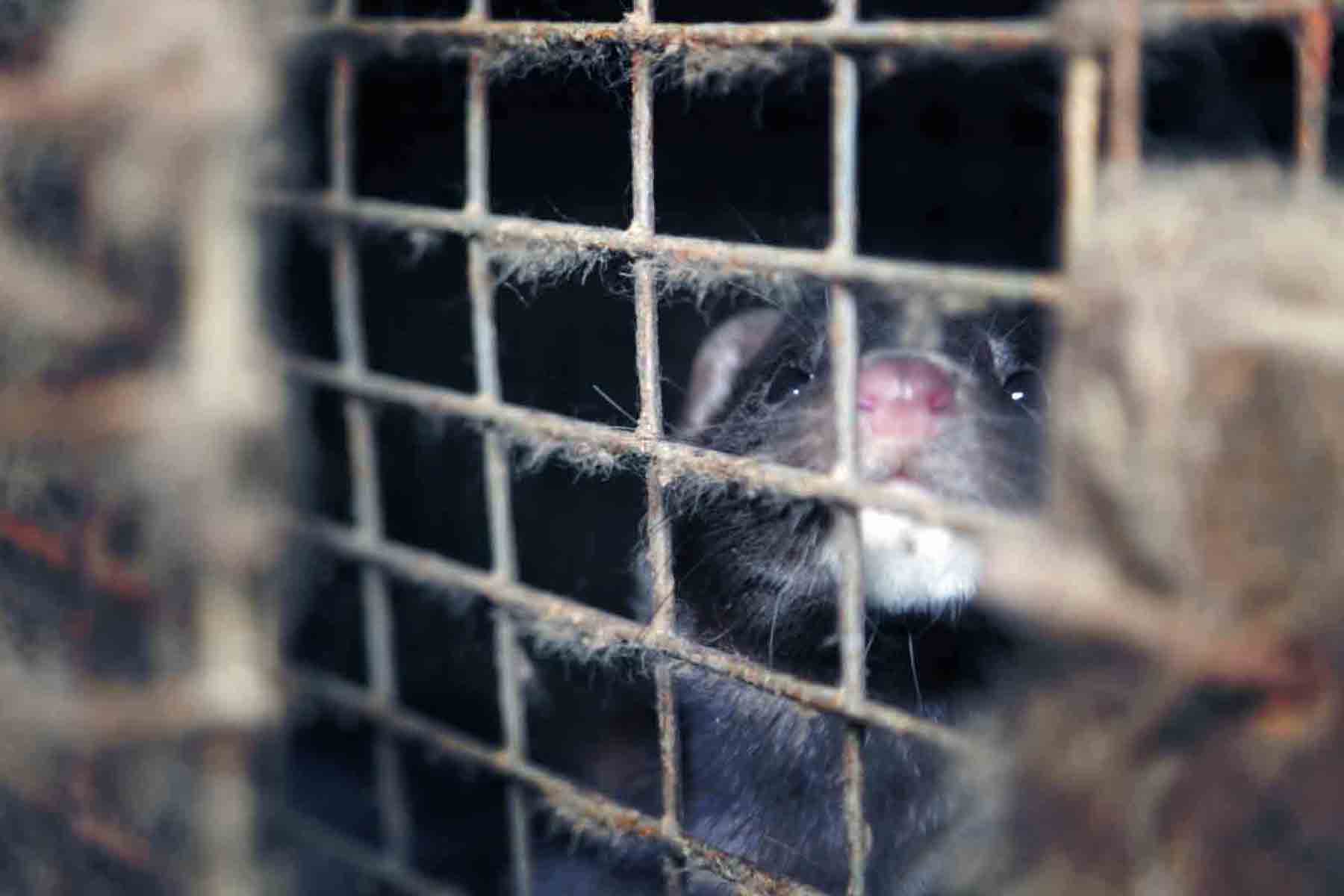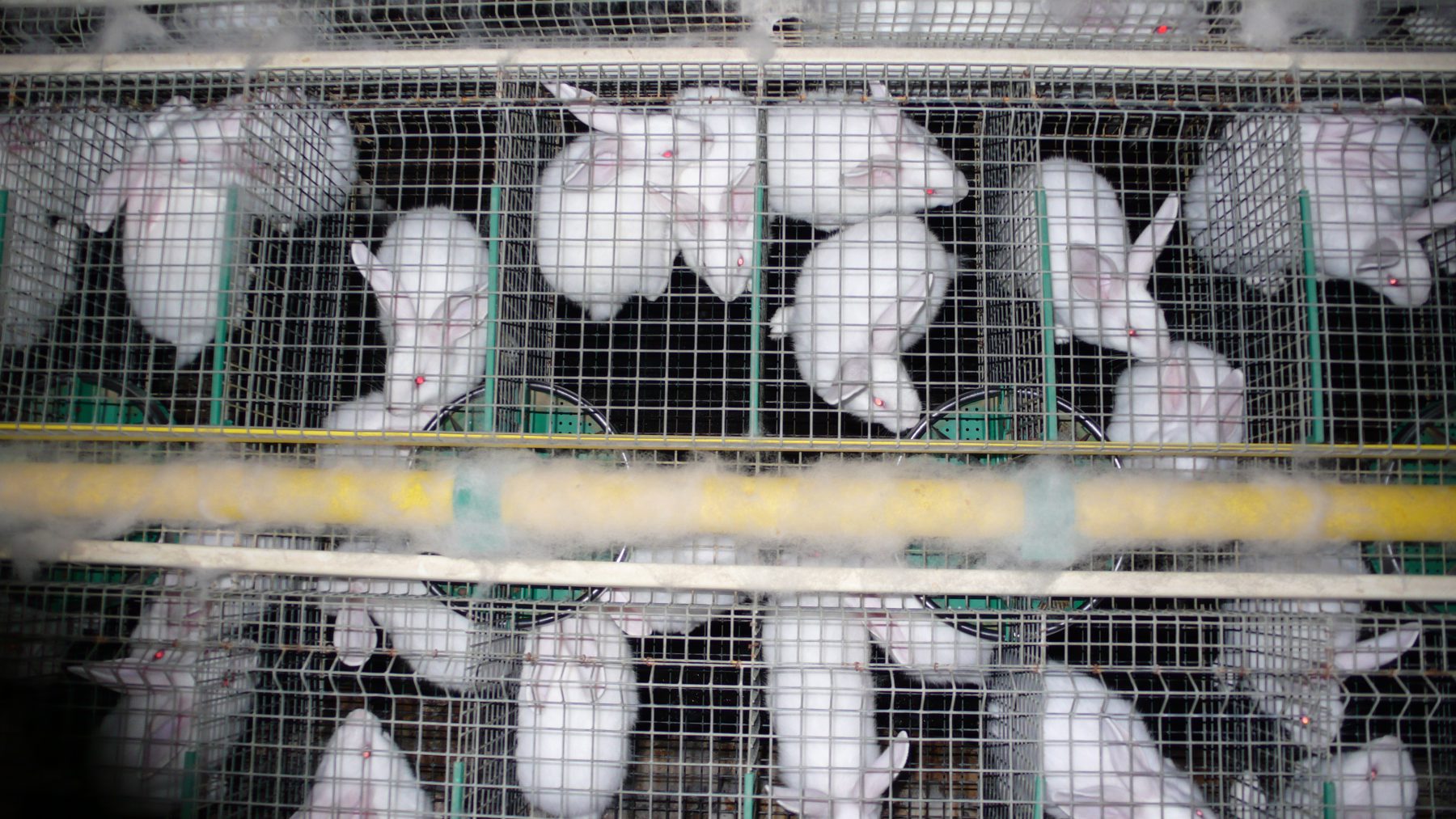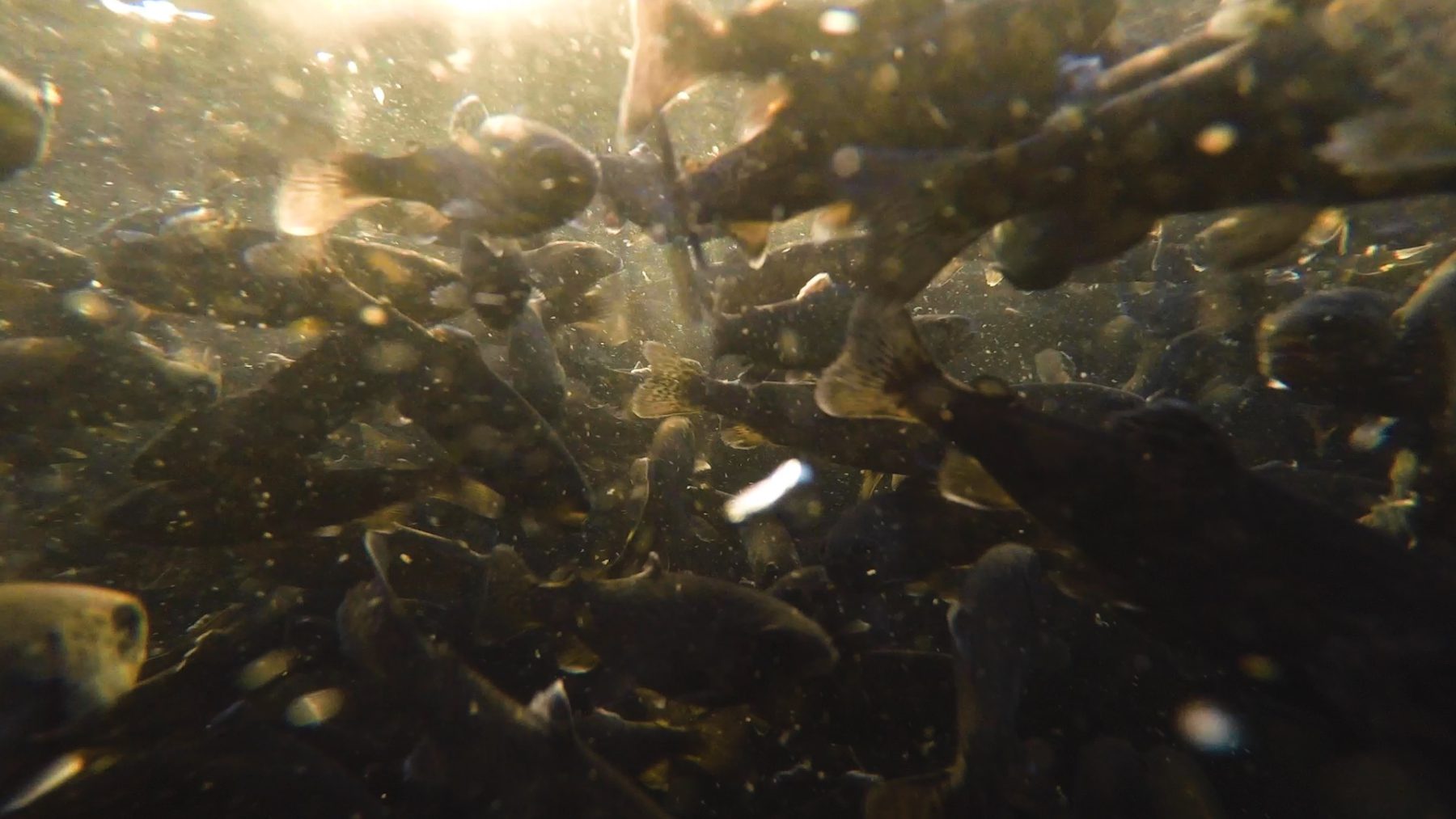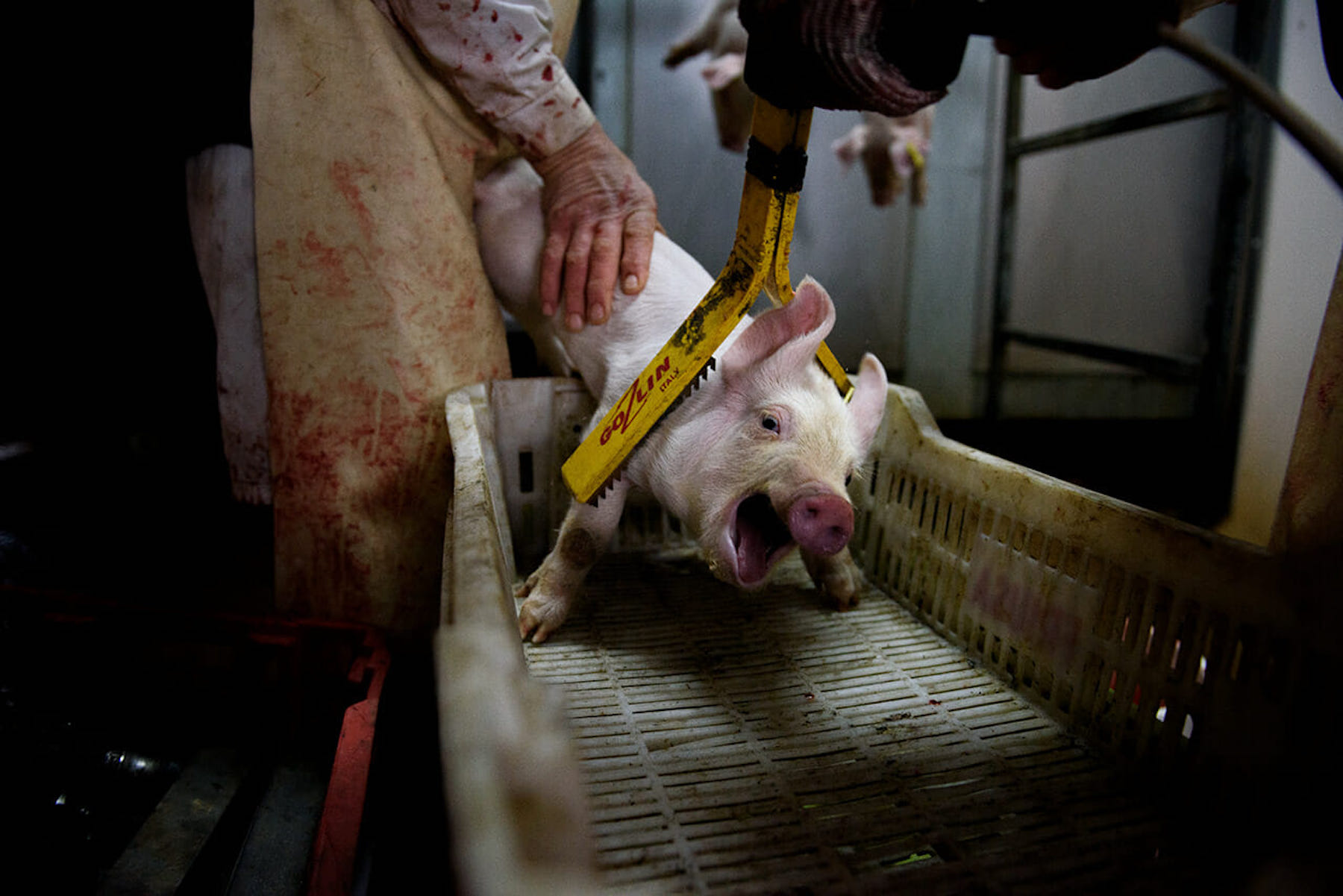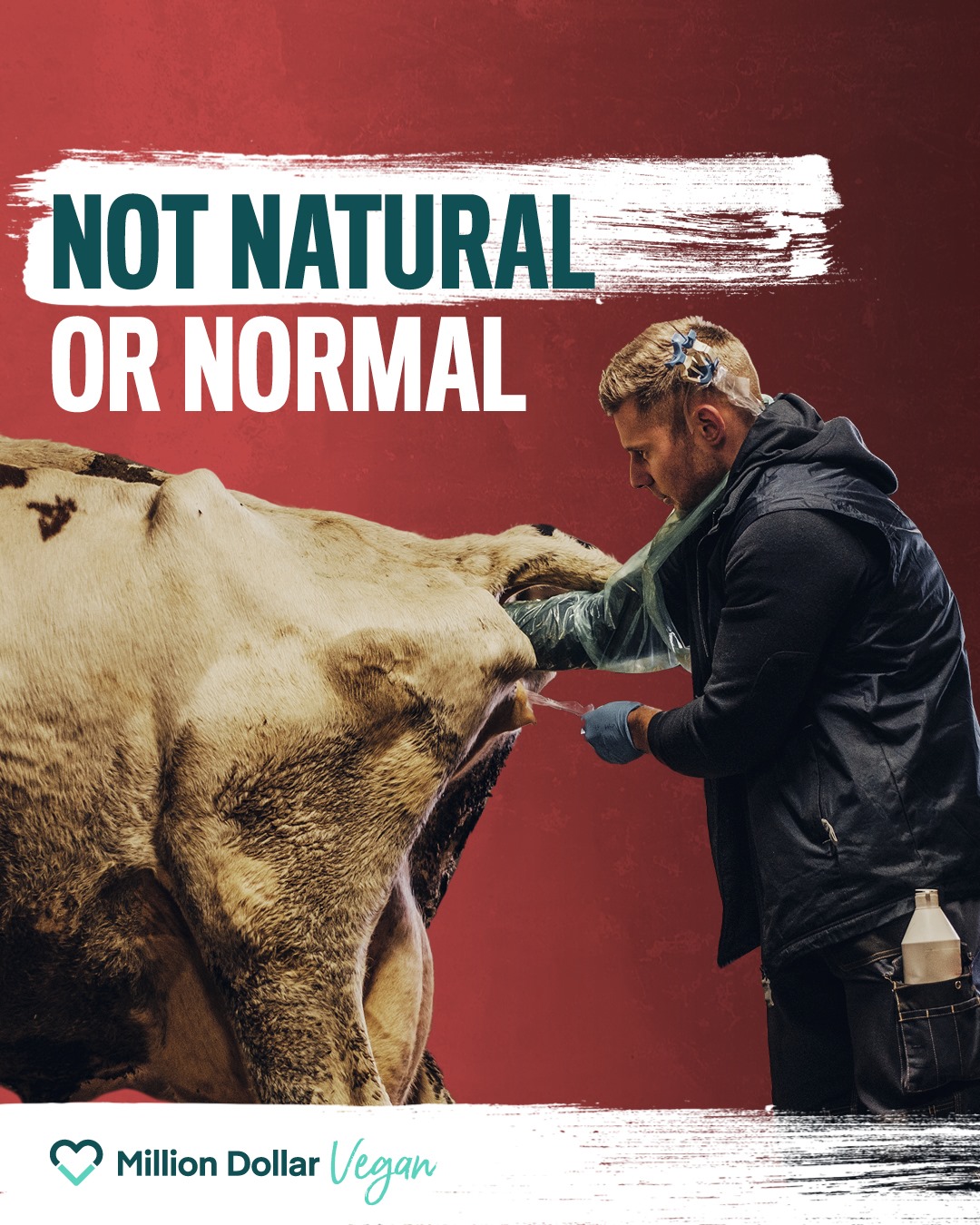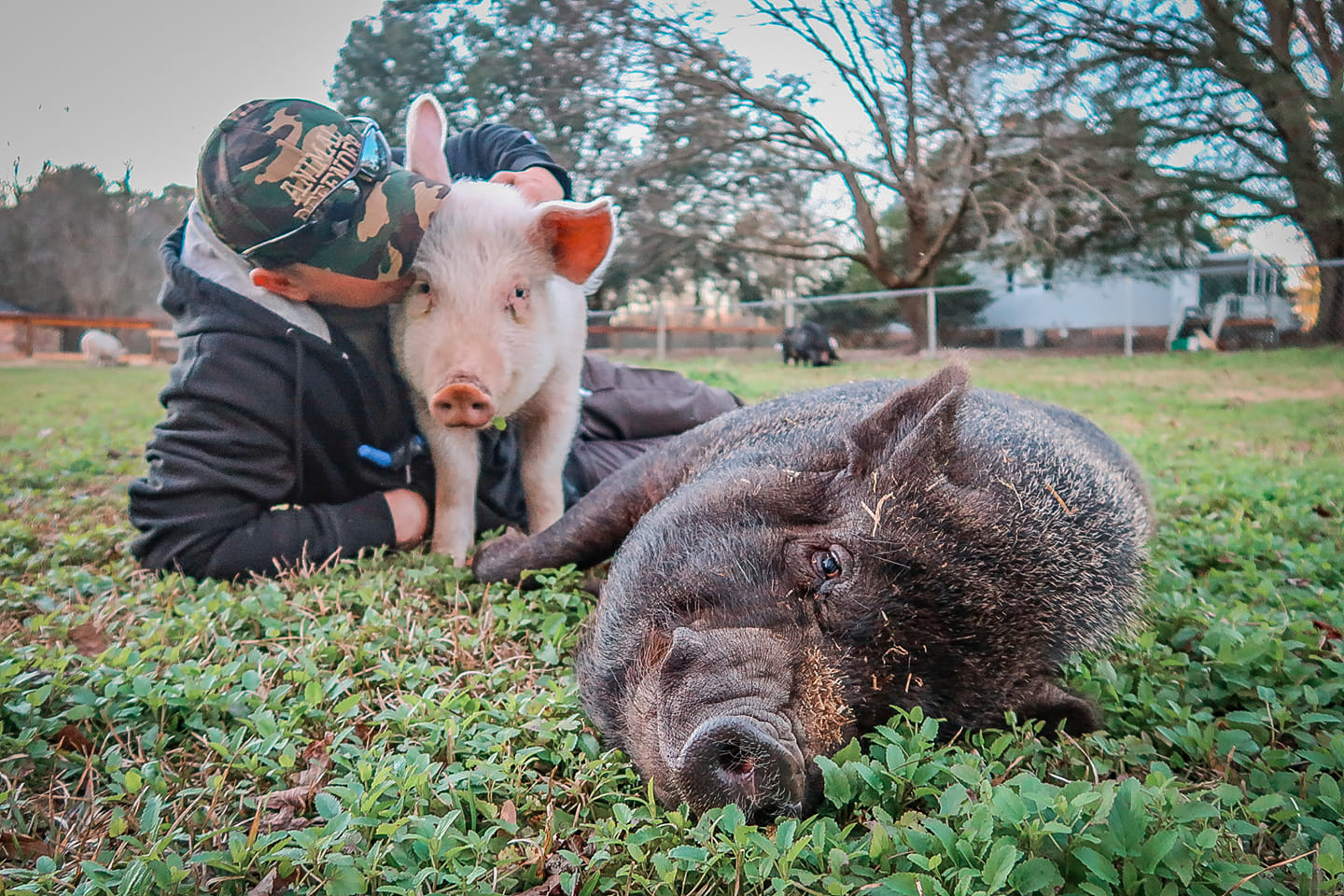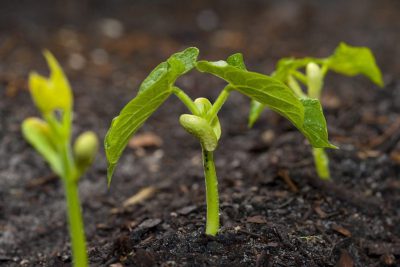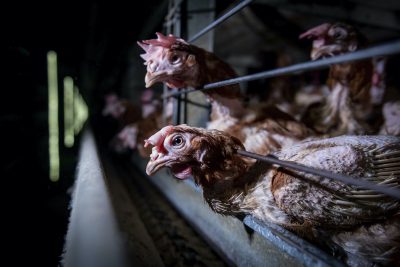The term ‘factory farming’ is so commonly used these days that we sometimes forget what it actually denotes: the systematic exploitation of living beings on an immense scale, while giving them no more thought than if they were components of a car being assembled on a factory line. But every single one of the animals bred, reared, mutilated, beaten, deliberately impregnated, starved, caged and slaughtered is an individual – each with a distinct personality, and with wants and needs that a factory farm can never fulfil.
What Are Factory Farms?
Factory farms are large-scale industrial facilities where animals are bred into existence, fattened for their meat or exploited for their milk or eggs, and then slaughtered. Nothing about it is natural – from the use of artificial (and sometimes surgical) insemination of the females to the unnatural feeds they’re given and the artificially lit and ventilated warehouses they are confined in.
Farming is a business with profit as its primary goal, and nothing is left to chance. The animals are fed the bare minimum to keep them alive and keep them producing. Their movement is severely limited otherwise that feed would be wasted on movement or play, when every last calorie should go to creating meat, milk or eggs. They are caged and crated for our convenience, despite the psychological and physical damage this causes. Friends watch friends die. Babies are taken from grieving mothers. In this ruthless industry, none of it matters so long as the profits keep coming.
Why Is Factory Farming Bad For Animals?
It takes very little imagination to see why being crammed inside a filthy shed or cage, standing on painful feet or broken legs, and breathing in noxious air while those around you succumb and die, would not constitute a good life. After all, we are animals too, and at a fundamental level, the things that we want are the same things that other animals want: to live freely, to be well fed, choose a mate and rear our young, to feel safe and be free from pain.
Factory farming is defined by confinement, and being confined with vast numbers of others means that individual animals almost never get individual attention, especially for smaller animals like chickens and ducks. After all, when there are tens of thousands all in one shed, how can they be treated like the distinct beings they are? And so, if one gets sick, she will die there, untreated. If one gets injured or lame, he will live his whole life in pain.
Abuse exacerbates their misery with animals commonly being kicked, beaten, electrically goaded and thrown. Then one day, they are released from it all, but their first day of freedom outside of the sheds, crates and cages is the day they will die.
Factory Farmed Animals
Most of the animals subjected to this merciless treatment are animals destined for human consumption, but minks are treated the same way for their fur, and puppies for the pet trade. Rabbits too, but their future is less certain. Rabbits leaving the factory farm could be heading for the slaughterhouse, the vivisection laboratory or life in a hutch in someone’s backyard.
Chickens
Chickens are probably the most abused animal on the planet, with 99 percent of those raised for human consumption in the US being factory farmed. These birds spend their short lives inside vast warehouses with tens of thousands of others. Millions cannot survive even their seven allotted weeks inside those sheds and will suffer, die and rot in the litter underfoot.
Chickens are permitted no more than seven weeks of life. These birds have been selectively bred to grow huge in that time, but inside that Frankenstein body, they are still babies. They cheep like chicks still, and have a chick’s blue eyes. Because their bodies grow so fast, their hearts, lungs and bones are put under enormous pressure. Bones break beneath their ballooning weight, and hearts give out. Those who get sick or are weak may starve to death and be swept away along with the trash when the sheds are cleared ready for the next batch of victims.
A different breed of chicken is farmed for eggs. In the US, the majority of egg-laying hens are caged, with each bird having no more space than a single sheet of letter-sized paper. All natural behaviors are denied them – they cannot scratch, forage, nest, or roost. There isn’t even space to spread their wings.
One especially vicious procedure is forced upon egg-laying hens in many US farms: forced molting, aka deliberate starvation. Denying food to birds for up to three weeks is incredibly cruel. The birds lose weight, their feathers fall out, and they stop laying eggs. They are so hungry they eat anything they can find – even the feathers that have fallen off them. But to some farmers, it is worth inflicting this trauma on them, because when the birds start to feed again and egg-laying resumes, the eggs are even bigger and more profitable. That is how little we consider the wellbeing of sentient creatures on America’s farms.
Cows
Just as two types of chicken have been purpose bred, so have two kinds of cows: one that produces unnaturally large quantities of milk, and one that puts on a lot of muscle for beef.
It surprises people that cows used for milk do not just give it with the turn of a faucet, as though other mammals – human beings included – could produce milk any time they were asked. But to produce milk, all mammals must first be pregnant, and we produce it to feed our young. But we don’t want those young animals, we just want the milk. And so when the calf is born, one of three things will happen: if female, she will taken from her mother so she cannot drink the milk, then she will be hutched alone in preparation for the day when she too can be impregnated; if male, he will removed so he cannot drink the milk and he may be crated alone, and kept weak and anaemic so he can be slaughtered for veal; those considered not to have a commercial value may simply be removed from their mothers and shot in the head.
Cows reared for their bodies are typically fattened on feedlots. These are large, barren outdoor pens, where up to 85,000 animals may be held at one time. For these animals who have evolved to roam over pastures, grazing, there is nothing to do but stand all day eating the food that is brought to them – often containing products grown on deforested lands.
Ducks
Most of us see ducks on bodies of water and think their lives look pretty good. We don’t see the millions who, like chickens, are kept crammed inside factory farm sheds. All the horrors that chickens endure, ducks do, too – the incarceration, the overcrowding, the ammonia-laden litter that burns their feet. But ducks have an additional cruelty inflicted on them – they are denied water.
Ducks are aquatic birds; they need water. They need it to moderate their temperature, and to keep clean. Without water to dip their heads into, their eyes become encrusted and some birds go blind.
Inside filthy, dark sheds, these playful birds – who need to swim, dive, dabble and play in water – are forced to stand all the time. Broken legs are not uncommon.
Almost all duck meat in shops and restaurants comes from these poor souls, hidden away from public view inside factory farm sheds.
Minks
One hundred and fifty years ago, wild mink were captured and held in cages where their fur could be ‘harvested’ without trappers having to go out into the wild to get them. Over the years, these semi-aquatic animals have been bred and bred to increase their fur yield. While they may now be considered domesticated, their wild instincts remain powerfully strong. After all, they have only been kept in captivity for 150 years, which is the blink of an eye compared to the 12,000 years of domestication for dogs.
Minks are shy, solitary, introverted creatures. The last thing they need is to be forced into small wire cages, packed in with many other minks. The stress is immense and leads many to self-mutilate.
Like ducks, minks need water. Naturally, they would spend 60 percent of their time in water but on farms, they see none of it, except in a drinking tube. There are approximately three million minks held on 275 farms in the United States. That’s three million semi-wild animals kept caged and psychologically tortured so people can wear fur that does not belong to them, and they do not need.
Pigs
Pigs are like dogs – they are smart, sociable, fun-loving and full of personality. They even love belly rubs and wag their tails when they are happy. While they share many of the same traits, the way we treat these two species could not be more different.
Most of us love our dogs. They’re our best friends and they share our homes, our beds and our lives. If someone forced them into a crate so small they could not take a step back and forward and left them there for weeks on end while pregnant, we would be disgusted. If they developed huge open pressure wounds on their shoulders from being forced to lie on concrete floors, we would call for action to be taken. If they were given nothing at all to do to occupy their minds, and their frustrations led to animals harming one another, we would weep. And if the first day that they were released from these horrific conditions was the day they were loaded onto a truck and taken to slaughter, we would be outraged at the abuse of a being who deserved so much more.
And yet when it happens to millions of pigs, we tend to look the other way or to pacify a troubled conscience by saying ‘they know no better’. But they do. They know that this is not the life they chose, wanted or deserved.
Puppies
And so, while we compare pigs to dogs and say we would be outraged if someone treated our dog the way that pigs are treated, we should know that the mother of the dog we love so much may also be living right now inside a filthy factory farm.
There are around 10,000 puppy mills in the US which churn out two million puppies for sale each year, usually through online sales or pet stores. We may see an adorable puppy and be so bowled over that we do not think of anything beyond that furry face. We don’t see that her mother is alone and trapped inside a cage, being bred from over and over until she is too exhausted to produce more puppies. Like every other factory farmed animal, when breeding dogs are no longer productive, they are likely to be killed.
These dogs – who are just as loving and wonderful as the one on your bed – will never know the comfort of a home, the friendship and love of a family, or even the absence of discomfort and pain that veterinary check-ups and flea treatment can ensure. Instead, they live – and too often die – inside a cage in a dark shed, never having gone for a walk, chased a ball or played with a friend.
This heartless system exists only because people buy dogs from puppy mills. It can be ended by adopting dogs from shelters instead.
Rabbits
It is extremely difficult to provide a meaningful and happy life to a captive rabbit. As a wild animal, they need freedom, plenty of space to run, jump, and binky; they need earth in which to dig a burrow, things to climb on, things to hide under, good fresh, suitable food, and companionship of their own kind. As prey animals, they also need to be protected from dog and fox attacks, and they must also be protected from pathogens, extremes of temperature, and things that frighten them. These cute little animals are actually extremely complex.
Inside farms, no effort is made to give them a life worth living. It is enough to keep them alive just long enough to slaughter them. Like minks and egg-laying hens, they are caged their whole lives. The wire mesh causes open sores and abscesses on their feet, and they suffer urine burns from having no choice but to lie in their own waste.
It is a life of misery for these gentle creatures, held in unsuitable conditions on America’s 4,000 rabbit farms.
Salmon and Trout
Even fish are factory farmed. Those who support this system argue that it takes the pressure off wild species but research shows this is just not true because wild fish are still taken from the oceans to feed farmed fish.
In the US, the only Atlantic salmon available for sale are factory farmed. In the wild, this incredible species will travel thousands of miles during their lifetime. They use their sense of smell to find their home rivers where they hatched, and they will swim 200 miles to locate their preferred spawning ground. In the filthy farm pools, all their instincts and natural behaviors are thwarted.
Undercover footage taken on a Maine salmon farm revealed the suffering these wild creatures are forced to endure: disfigured salmon were scooped out of crowded tanks and left to slowly suffocate in plastic containers. Some suffered from spinal deformities, while others had a fungal growth eating away at their faces. As is so often found in investigations, deliberate ill-treatment of farmed animals by workers compounds their suffering. At this farm, workers were filmed slamming and stomping on the fish.
Like salmon, trout are factory farmed in the US, and like all other farmed animals, the overcrowded unhygienic conditions leave them susceptible to a range of fungal, viral and bacterial diseases. In July 2020, a never-before-seen bacterial outbreak at a Californian trout farm killed up to 60,000 animals.
Should we care about fish? Do they even feel pain? Research is clear that the answer is yes.
Turkeys
People like the breast meat of turkeys and the more of it each bird has, the more money can be made from selling their bodies. To maximise the size of the breast, turkeys have been selectively bred over and over, which is why the factory farmed birds are the shape that they are. While it maximises profits for farmers, it comes at a cost to the birds.
The breast is so huge that most turkeys can no longer breed naturally. Instead “turkey milkers” are employed to stimulate a male until he ejaculates, and then a syringe or straw full of semen is inserted into the female bird. The hens are often injured during the process.
Turkey chicks are reared in the same way as chickens – in the same, crowded, dirty sheds where the birds suffer the same problems, including burns from standing on urine-soaked floors, as well as joint and leg problems, foot conditions and lameness. They suffer, too from the same boredom-related injuries as pigs and chickens.
It’s a far cry from their wild ancestors who forage on forest floors and fly short distances at up to 50 miles per hour. But like their wild ancestors, farmed turkeys are bright and inquisitive, and – if given the chance – are full of mischief. On farms, they are treated as a product but in reality, each bird is as different in personality as every person you know.
Is Factory Farming Cruel?
Cruel /krʊəl/
adjective
wilfully causing pain, suffering or distress to others, or feeling no concern about it
Yes. That is the very definition of factory farming.
How Are Factory Farmed Animals Killed?
Commercial slaughter is not like euthanizing a sick dog. It is brutal and ruthless and terrifying.
After being driven for long periods, frightened animals are shoved, kicked, beaten and dragged into the slaughterhouse, amidst the stench of blood, and the sounds of clanging metal and frightened animals crying out.
All land animals are slaughtered by being inverted and having their throats cut, which means they die from bleeding out. The law says that animals should be stunned first – though there are exemptions that allow millions of animals to go to the knife fully conscious – and stunning methods vary from slaughterhouse to slaughterhouse and from species to species.
The purpose of stunning is to render animals unconscious before their throats are cut but it doesn’t make the process cruelty-free. Far from it.
Cows are stunned with a ‘captive bolt gun’, which shoots a retractable bolt into the animal’s brain. Getting the power, placement and direction right is not easy, especially when a frightened animal is trying to escape, and so in practice, cows are often shot in the head multiple times before they lose consciousness and fall to the ground.
Sheep are commonly stunned by passing a powerful electric current through their brains. Electrified tongs are applied around their heads but if the placement is wrong, or the tongs are not applied for the correct duration, or if the frightened animal moves – as they often do – he or she will suffer a huge electric shock but will not be rendered unconscious.
Like sheep, pigs may also be stunned using electrified tongs and the same welfare concerns apply, although it is becoming increasingly common to force pigs into cages and lower them into gas-filled chambers. As the animals panic and hyperventilate, they breathe in the toxic fumes, convulsing due to the abrasive poison and suffocating through lack of oxygen.
Chickens and turkeys may be hung upside down by their legs and dragged through electrified water. This is bad enough given the high proportion of birds who have broken legs by the time they reach the slaughterhouse. But then those who are small may miss the water completely, while others lift their heads deliberately to avoid it. Those birds will reach the neck-cutter fully conscious. Birds are increasingly being gassed to death.
Stunning animals causes immense suffering but not stunning them also causes immense suffering. There’s no way around it, and there’s no such thing as humane slaughter.
What Percent Of Meat Comes From Factory Farms?
Ninety-nine percent of farmed animals in the US are kept on factory farms, so almost all meat is a product of cruel factory farming.
Facts About Animals And Factory Farms
1. Dairy cows are artificially inseminated like this …
One human hand enters the cow’s anus to manipulate her cervix into position while the other hand inserts a tube of semen into her vagina. How natural does milk seem now?
2. Sheep have hormone sponges inserted into their vaginas
To ensure all lambs are born around the same time, farmers make sure all ewes get pregnant at the same time by bringing them into estrus with the help of hormone-soaked sponges they insert into the animals’ vaginas.
3. Sheep may be surgically inseminated
Sheep who do not get pregnant are referred to as ‘empty’. Farmers do now want ‘empty’ sheep. To maximise the chances of pregnancy, sheep may be impregnated surgically.
4. Everyone gets mutilated
Cows are branded, de-horned, castrated. Pigs have their tails cut off, their teeth clipped and are castrated. Sheep have their tails cut off, are castrated and may be “mulesed” (slices of skin cut away). Chickens have their beaks cut off. Turkeys have their snoods and claws cut off. Analgesia is rarely required or used.
5. They’re all babies when they die
It’s not just veal that comes from babies. Chickens may be just six weeks old. Cows, sheep and pigs just a few months. They are all babies when they die.
6. No one gets out alive
Being vegetarian spares many animals’ lives but every egg-laying hen and every milk-producing cow will be sent to slaughter when they stop producing the quantities demanded of them. Their poor, weak bodies are made into low-grade products like soups, pies and baby food.
7. Factory farms are forced onto underprivileged communities of color
Industrial pig farms are often sited in rural areas where land is cheap – often amidst communities of color. Research shows a correlation between “air pollution from hog farms and higher rates of nausea, increases in blood pressure, respiratory issues such as wheezing and increased asthma symptoms for children, and overall diminished quality of life for people living nearby.”
8. Slurry lagoons kill people
The slurry that causes respiratory distress in local residents can also kill people. Farmworkers die from the gases that come from the vast pools of stored manure.
9. Slurry lagoons kill wildlife, too
Slurry leaks from these storage ‘lagoons’ and poisons waterways, creating ‘dead zones’ where no animals can survive. Factory farming is bad news for wildlife.
10. Factory farming animals drives deforestation and wild species loss
The production of meat needs so much land (because it gives far fewer calories back per hectare than plant foods) that we do not have enough space to produce it. So, vast swathes of ancient forests are cut down to make way for grazing or to grow crops to feed farmed animals. The wild animals who once lived there are displaced or killed. Since 1970, humans have wiped out 60 percent of all wild animal populations and animal agriculture is a big part of the problem.
The History Of Factory Farms
While mink farming began 150 years ago, factory farming animals for human consumption really began with chickens in the 1920s. With intensification, flock sizes increased, costs came down and profits rose.
In the 1940s – and partially in response to global food shortages during the second world war – farming really started to intensify. Not just mink and chickens but turkeys, ducks, pigs and cows – any animal that could be exploited for their meat, milk, eggs, skins and fur, could yield greater profits by scaling up numbers and dialling down compassion.
Battery cages became the norm for egg-laying hens in the 1950s and 60s, and farrowing crates imprisoned pregnant pigs around the same time. Since then, it has been a race to the bottom and now the vast majority of the world’s billions of farmed animals are kept inside factory farms.
It is a desperate situation but there is hope. The rapid rise in meat-eating – driven by cheap production in factory farms – is no longer being seen as a positive thing. Now, we know the connections to climate change, deforestation, species loss, antibiotic resistance, pandemics, heart disease, type 2 diabetes, Alzheimer’s disease, and some cancers, more and more people are seeing the folly of factory farming.
We hope its fall will be even more rapid than its rise.
Conclusion
In a 2020 poll, 94 percent of Americans said that farmed animals deserve to live free from abuse and cruelty. But given almost every farmed animal is raised on a factory farm and most Americans still eat meat, there is a real disconnect between what we believe and what we do.
When investigations reveal suffering on farms, there is an understandable outcry because most people are kind and caring. But for many, stepping away from funding factory farming by changing what they eat can be really daunting.
But you know what? Something miraculous happens when we live the way we believe. We are told so often that when people switched to eating plants, not only did their bodies get stronger, fitter, and healthier, but their minds and consciences got clearer, lighter, and happier, too. Many new vegans report their mental health improves, and they start, at last, to truly feel at peace.
Be the change you want to see in the world. Try vegan.

